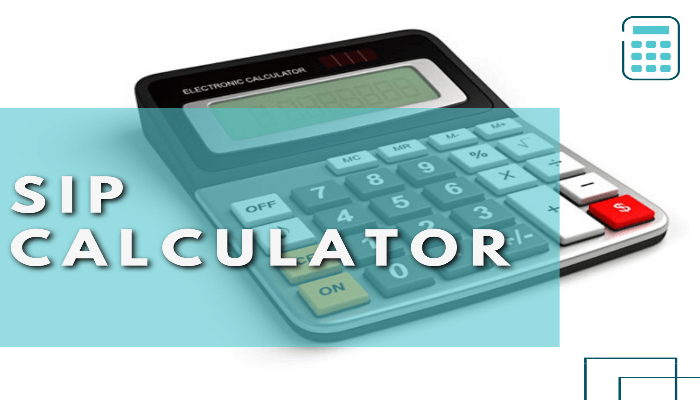As more people become conscious about their financial planning, they are showing more interest in mutual funds via different investment routes. The systematic investment plan is one such route that allows beginners and investors who are averse to risk to park their money in mutual funds while exposing themselves to fewer risks. Often investors are more concerned about the returns on their investment, and to be sure of the same, beginners can utilize a SIP calculator to understand what they can expect at the end of the lock-in period, if any.
However, to use the same effectively, one must know how to use a SIP calculator and the principle behind it.
That said, let’s learn about the financial tool in detail below.
What is SIP Calculator – In a Nutshell
A SIP calculator is a tool that enables users to compute returns on their SIP investment. The online tool weighs in estimates return rate and the value of the investment after a given period of time to provide reliable outcomes. Notably, the manual computation is deemed labour-intensive because of the monthly payment feature accompanying SIPs. Additionally, the different holding periods for each contribution lead to different returns for each payment.
Usage of a SIP calculator
A SIP calculator offers users a bifurcation of the total value of their investment into a systematic investment plan with two figures – namely, the principal and the estimated return.
A SIP return calculator offers an overview of how an investment can grow over time at a certain rate of return against a set sum of money.
The online tool may let you factor in the impact of inflation but not explicitly. To do so, one must manually determine the nominal return rate you expect to earn on your invested sum on the basis of the actual rate of return and the current inflation rate. Once you have found the details, you must enter the manually computed rate into the SIP calculator.
Examples of using a systematic investment plan calculator
A SIP calculator helps determine three figures –
- Principal
- Returns on investment
- Future value
In turn, it offers an insight into how much you could earn through your investment if you park, say, Rs. XX amount every month for Y years at the rate of Z%. This is handy for those with a set financial goal and who plans their investments to achieve it accordingly.
For instance,
Mr. Gupta wants to invest in his child’s college fund. He will need Rs. 20 lakh after 5 years, so he plans to invest Rs. 20,000 monthly. Mr. Gupta has a strong risk appetite, so he doesn’t mind picking an aggressive strategy to get an average 12% return on this investment for 5 years.
He uses the SIP calculator and enters these details to find the –
Invested sum – Rs. 12 lakh
ROI: Rs. 4.5 lakh
Future value: Rs. 16.5 lakh
This information made it clear that Mr. Gupta will be short of his goal by nearly Rs. 3.5 lakh at the end of 5 years. Finding this out before investing in SIP can help him adjust his inputs toward the goal for better results.
One can make several adjustments to the combination of investment tenure, principal amount, and SIP strategy that suits their risk appetite and financial goals.
Things to know to use the SIP calculator
To use the SIP calculator, one must know which key inputs are required to be fed into the tool.
Read along to learn more about such inputs –
- Investment amount
This is the sum of money you plan to invest in mutual funds via the SIP route at a given date at regular intervals – i.e., monthly, quarterly, etc.
- Investment duration
It is the investment period expressed in years. In other words, it denotes the period for which you wish to continue a SIP.
- Investment strategy
It helps determine the average annual return investors expect from their investments. One can select among aggressive, conservative, or balanced investment strategies and may enter a certain rate of return (expected) from the “custom” setting.
Steps to use the SIP calculator
You can determine the potential future value of SIP with the help of a SIP calculator by simply following these steps:
Step 1: Open a reliable SIP calculator
Step 2: Enter the monthly investment amount
Step 3: Enter investment tenure and expected rate of return
Once these details are fed, the tool will show the future value of the investment.
Alternatively, you can weigh in on your investment goal to determine how much money you need to invest via SIP to reach them. To find out the monthly SIP, one needs to enter their investment goal, i.e., the amount they wish to generate, the time period to reach the goal, and the investment strategy from among – balanced, conservative, or aggressive strategies. The tool also helps understand if their SIP investment will help them generate more returns than the other traditional savings plans.
What is the formula for SIP Calculators?
Thanks to the SIP calculator, investors do not need to compute their investments manually. However, it is still a wise idea to know how the same works to be sure about its accuracy and performance.
The SIP calculator uses this SIP formula to determine investment value and more –
FV = P x {[(1 + r)n – 1] ÷ r} x (1 + r)
In this formula,
FV is the future value of SIP investment
P is the principal contributions
R is the expected monthly rate of return
n is the total number of contributions
For instance, if Kamal wants to find the FV for a SIP of Rs. 1000 a month for a period of 2 years and at an expected rate of return of 12% per annum, here’s how the SIP formula would look like this –
FV = Rs. 1000 x {[(1 + 0.01)24 – 1] ÷ 0.01} x (1 + 0.01)
Hence, a SIP calculator can be helpful in more than one way and help make an informed investment decision. Since the tool allows multiple adjustments, users can take advantage of its features to pick the most suitable investment plan and align their approach accordingly.








